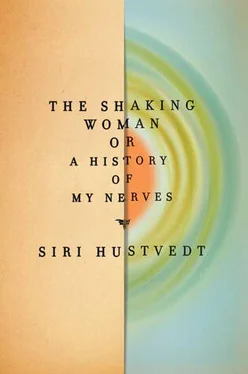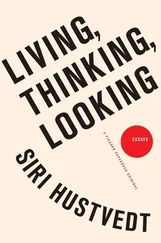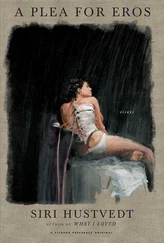THE TASK OF DIAGNOSIS is to abstract “illness” from “person.” Measles is one thing. It comes and goes. The spots move from one person to another. It is caused by a single pathogen. But when does illness become person? In 1975, Norman Geschwind and a fellow doctor, Stephen Waxman, published a paper about the shared characteristics they had noticed in their patients with temporal lobe epilepsy between seizures (called the interictal period): an increased religiosity or concern with ethical issues and a deepening of emotions, which vacillated with irritability. They also seemed to have a lowered sex drive and hypergraphia — many of them had a need to write, sometimes compulsively. 160
By religiosity, Geschwind was referring to a feeling more related to Freud’s oceanic feeling and Baruss’s extraordinary transcendence than to formal theology. Religious and artistic figures as diverse as Saint Paul, Muhammad, Joan of Arc, Saint Teresa of Avila, Fyodor Dostoyevsky, Gustave Flaubert, Søren Kierkegaard, Vincent van Gogh, Guy de Maupassant, Marcel Proust, Lewis Carroll, and Alfred, Lord Tennyson have all been diagnosed either during or after their lifetimes with temporal lobe epilepsy. 161Postmortem diagnoses of the very gifted and very famous have been appearing in book and paper form since the beginnings of modern medicine. It now seems clear that Flaubert had epilepsy, although he was also diagnosed with neurosis and hysteria; Dostoyevsky certainly had epilepsy (although Freud famously diagnosed him with hystero-epilepsy); Saint Paul’s conversion on the road to Damascus appears to have been connected to a seizure; Saint Teresa has been diagnosed with epilepsy, hysteria, and migraine; van Gogh, epilepsy, lead poisoning, Ménière’s disease, schizophrenia, bipolar disorder, and other illnesses. Lewis Carroll is claimed by neurologists as a temporal lobe epileptic and a migraineur. Symptoms can lead us down many roads, especially when you are diagnosing a patient who has been dead for years. Scrutinizing diaries, letters, texts, and artworks for neurological clues has its limitations.
As a girl, I drew constantly, an urge that later shifted to writing, and I often had a sense that there was an ineffable presence beyond me. My sex drive seems normal (whatever that means), but I have often felt I am too passionate in social situations and too intolerant of small talk, although I work hard to lower the intensity of my presence. I confessed to Dr. L. that I have sometimes wondered if I had it — a temporal lobe personality. But then again, my identifications are mobile. I empathize with lots of illnesses. Like countless first-year medical students, immersed in the symptoms of one disease after another, I am alert to the tingles and pangs, the throbs and quivers of my mortal body, each one of which is potentially a sign of the end.
No doubt because of my own peculiar visions and elations, mystics in all traditions fascinate me, and I have read about many of them. However one interprets these transcendent states, mystical experiences are genuine, take any number of forms, and can be spontaneous or induced by drugs, meditation, or even repetitive drumming or music. In his book Major Trends in Jewish Mysticism, Gershom Scholem quotes a disciple of Abraham Abulafia’s who after two weeks of meditation began to shake: “Strong trembling seized me and I could summon no strength, my hair stood on end, and it was as if I were not of this world.” 162I was in high school doing research on Christian mystics when I first ran into earlier versions of “God spots,” medical explanations for hearing voices, having visions, and euphoric feelings. Altered states of mind have long been viewed as pathological and, as such, they are explained away. In Varieties of Religious Experience, William James calls this method of elimination “medical materialism”:
Medical materialism finishes up Saint Paul by calling his vision on the road to Damascus a discharging lesion of the occipital cortex, he being an epileptic. It snuffs out Saint Teresa as an hysteric, Saint Francis of Assisi as an hereditary degenerate. .. And medical materialism then thinks the spiritual authority of all such personages is successfully undermined.
James goes on to say that modern psychology accepts “psycho-physical connections” and the overall “dependence of mental states upon bodily conditions.” It follows therefore that all states of mind are organic in this sense:
Scientific theories are organically conditioned just as much as religious emotions are; and if we knew the facts intimately enough, we should doubtless see the liver determining the dicta of the sturdy atheist as decisively as it does those of the Methodist under conviction anxious about his soul. When it alters in one way the blood that percolates it, we get the Methodist, when in another way, we get the atheist form of mind. So of all of our raptures and our drynesses, our longings and pantings, our questions and beliefs. They are equally organically founded, be they of religious or of non-religious content. 163
James did not believe that this was the end of the matter, as the many pages that follow this passage demonstrate. Neither livers nor neurons, despite their importance, will suffice as explanations for spiritual or intellectual beliefs and experiences. The engineer who rejected empathy is no less subject to his bodily reality than Saint Paul. James’s thought echoes Dostoyevsky’s meditation on illness and feeling in The Idiot . “What if it is a disease?” his epileptic hero, Prince Myshkin, asks himself. “What does it matter that it is an abnormal tension, if the result, if the moment of sensation, remembered and analyzed in a state of health, turns out to be harmony and beauty brought to their highest point of perfection, and gives a feeling, undivined and undreamt of till then, of completeness, proportion, reconciliation, and an ecstatic and prayerful fusion in the highest synthesis of life?” 164Although sometimes the morbid is also the transcendent, the transcendent cannot be reduced to the morbid.
Dostoyevsky exploited his epileptic auras in his novels, and they undoubtedly influenced his religious beliefs. Flaubert never explicitly used his seizures in his fiction. Emma Bovary’s romantic effusions are wholly different from Prince Myshkin’s elation, not the least because Flaubert kept an ironic if sympathetic distance from his theatrical heroine. Dostoyevsky and Flaubert may have had the same disease, but their personalities and their art developed along entirely different paths.
BROADLY DEFINED AS DISEASED OR OTHERWISE, mystical experiences seem to dissolve the boundaries of the self. If stories from the neurology ward make anything clear, it is that the borders of the self we imagine are mutable. Migraine auras have sometimes borne me into a sense of happy immersion in the world, but the shaking woman cuts me in two. The former creates a sense of wholeness and harmony, the latter, disruption and division. When the shaking happens, my narrating first-person subject seems to go in one direction and my recalcitrant body in another, which illustrates the fact that I locate myself through that inner voice. Language is intimate to my sense of self — that endlessly ruminating verbal interior that accompanies me as I go through my daily activities. I feel I own that commentary, that I form it to match what I am thinking or feeling or seeing, and when I speak aloud, I express myself with greater care to be understood, just as I listen intently when I want to comprehend what another person is saying. But sometimes words become unhinged from self-feeling and float off into foreign territory and are heard as if they are coming from invisible others. People hear voices.
In his Confessions, Saint Augustine writes about his profound spiritual crisis, during which he hears a child’s voice saying over and over, “Tolle, lege” (Pick up and read). 165Joan of Arc heard voices, acted on them, and found herself in the French court and on the battlefield. William Blake both saw and heard angels. The list is long and includes Muhammad, the Sufi poet Rumi, Yeats, and Rilke, all of whom listened to voices during periods of high tension and emotion. In one of my hospital classes, I taught a woman student who spoke to God regularly, and he answered her. She had a direct line to the divinity because he was, she told me, her husband. Of course, not all hallucinated voices have a revelatory religious quality. A friend of mine related the story of a man he knew who was tormented by nasty voices whenever he turned on the water to take a bath: “You dirty, shitty, little scumbag!” The history of hearing voices is as old as the history of convulsive illness. Socrates heard voices, and in The Iliad and The Odyssey, the voices of the gods guide the heroes. Whatever the content of the words uttered, intrusive voices are always experienced as not coming from the self, which makes them qualitatively different from our inner speech or internal narrators, although some researchers have theorized that inner speech is somehow deflected in these experiences. Like the alien hands of split-brain patients, the paralyzed limbs of neglect patients, Neil’s remembering writing hand, and the automatic texts that flowed from the pens of innumerable poets, they are not understood as something that belongs to me.
Читать дальше












